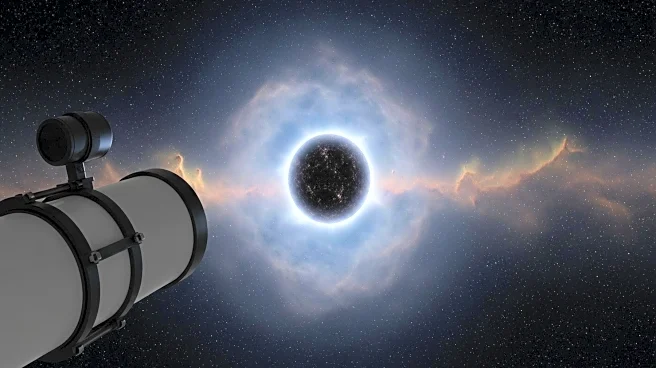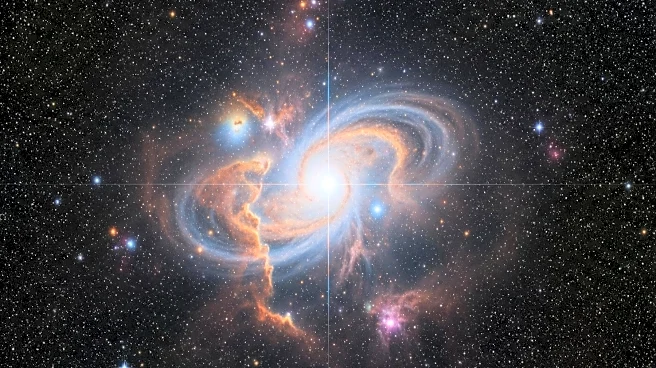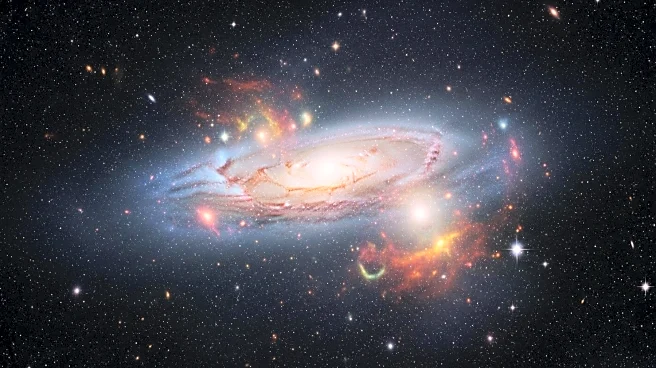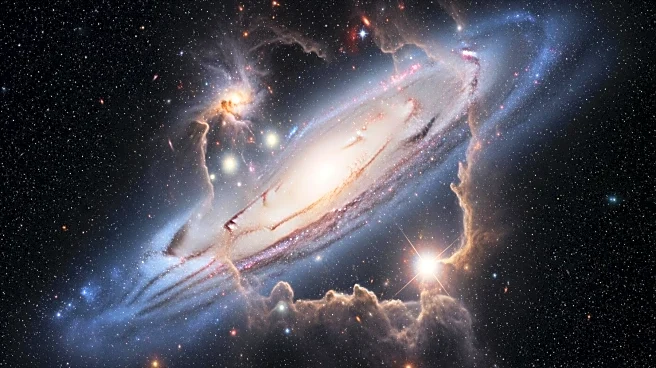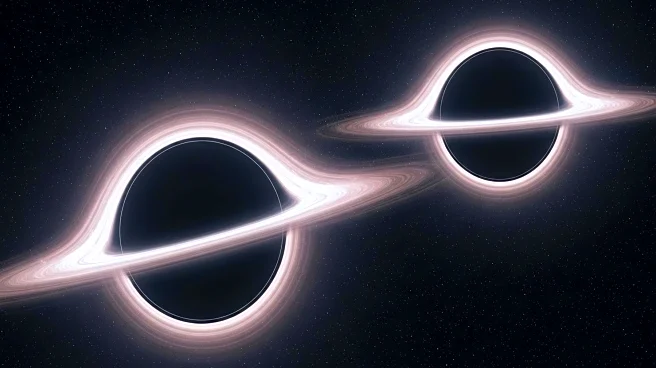What's Happening?
The James Webb Space Telescope (JWST) has potentially identified dark stars, hypothetical objects powered by dark matter particles, in the distant universe. Researchers analyzed four of the most distant objects ever observed, finding that they are consistent with the dark star explanation. One object exhibited a light absorption feature at 1,640 Angstrom, indicative of dark stars. These supermassive dark stars are bright, giant clouds primarily composed of hydrogen and helium, supported by self-annihilating dark matter. The discovery could address mysteries related to dark matter and the formation of supermassive black holes.
Why It's Important?
The identification of dark stars could revolutionize our understanding of dark matter and its role in cosmic evolution. These objects may provide insights into the nature of dark matter and its interactions, potentially leading to new physics theories. The existence of dark stars could explain the early formation of supermassive black holes, challenging current models of cosmic growth. This research underscores the importance of advanced telescopes like JWST in exploring the universe's most distant and enigmatic phenomena.
What's Next?
Further observations are needed to confirm the identity of these objects and their classification as dark stars. Researchers will continue to analyze their spectra and morphology to refine their understanding. The scientific community may explore the implications of dark stars for dark matter research and cosmic evolution theories. Collaborative efforts will be essential to advance this field and address the questions raised by these findings.
Beyond the Headlines
The discovery of dark stars could have profound implications for theoretical physics, potentially leading to new models of the universe's structure and behavior. It may also influence the search for extraterrestrial life by altering perceptions of habitable zones and cosmic environments. Ethical considerations arise regarding the allocation of resources for space exploration versus addressing terrestrial challenges.
